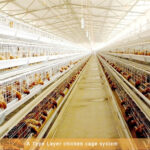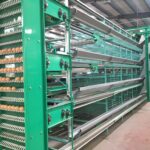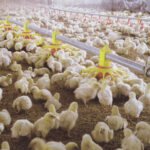How to reduce the prevalence of chicken flocks?
With the improvement of people’s living standards, more and more people like to eat chicken, and people are more concerned about whether the consumption of chicken is healthy. Therefore, the quality of the flock, the health of the nutrition, and the presence or absence of disease are the concerns of the farmers. In order to ensure the meat quality of the chicken flock, we must pay attention to the disease prevention work of the flock. Let’s talk about how to reduce the prevalence of chickens.
1. The temperature of the house should be suitable: the proper temperature can give good benefits to the feed. In addition to adjusting to the temperature of the chicken standard, farmers should also be able to flexibly control the temperature based on the response of the chicken flock. When the temperature of the house is too low, the chickens scream and gather. When the temperature of the house is too high, the chickens are scattered and have a wheezing. The temperature is suitable for the chickens to be evenly distributed. Therefore, farmers should adjust the appropriate temperature according to the actual situation, and can not be judged according to the standard.
2. The chicken house has no smell, fresh: the number of broiler chickens in the chicken house is large. If the farmer does not pay attention to ventilation or clearing the manure, the chicken house will produce a lot of harmful gases such as ammonia, which will seriously affect the health of the broiler and even cause death. Therefore, farmers should carry out reasonable ventilation without lowering the temperature of the normal suitable house, so as to reduce the content of harmful gases and dust in the house, ensure the freshness of the house, and enable the broiler chickens to grow healthily.

3. Appropriate Density: Nowadays, broiler chickens are cultured in broiler rearing equipment and have high breeding density. In order to be able to raise more chickens, some farmers do not pay attention to the standard density and increase the density. Excessive density causes uneven growth of chickens, and it also increases harmful gases in the air. Chickens are prone to infection with E. coli, coccidia, etc., and can accelerate the disease. Therefore, in the process of raising chickens, farmers must not greet the amount of farming, ignoring the appropriate density.
4. Strengthen the sanitation and disinfection of the chicken house: Regularly carry out the disinfection work of the chicken house, which can effectively kill the pathogenic microorganisms in the chicken house, which is a key measure to prevent and cure diseases and ensure the hygiene of the chicken house. Therefore, in the prevention and treatment of chicken diseases, farmers should always put the disinfection work of the chicken house in an important position. It is necessary to grasp the three links, that is, the disinfection work of the broiler chickens after the chicks are placed in the house before entering the house.
5. Regular drug prevention: Viral diseases are prevented by vaccination. Most of the bacterial diseases rely on the regular release of drugs to achieve the purpose of prevention. Bacterial diseases and parasitic diseases prevalent in spring mainly include colibacillosis, salmonellosis, chronic respiratory diseases, and coccidiosis. Most of these diseases have a lot to do with age and environmental changes. This requires different medication prevention procedures based on different situations.
The above five points are some measures and points that the author tells the farmers to reduce the prevalence rate in the process of raising broilers in broiler battery cages. I hope to attract the attention of the farmers. If there are other questions, the farmers can consult the poultry farming equipment manufacturers.









